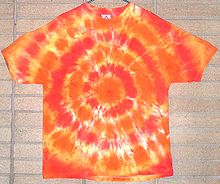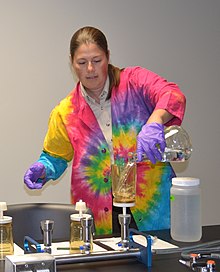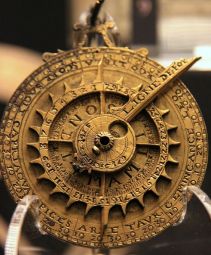NEW EPISODES TUESDAYS AT 10/9C
http://www.history.com/shows/the-hunt-for-the-zodiac-killer
SHARE
S 1 E 1
The New Suspect
TV-14 V,L
http://www.history.com/shows/the-hunt-for-the-zodiac-killer/season-1/episode-1
A new hunt for the mysterious Zodiac Killer gains unprecedented access to files, unearthing a complicated cypher that may contain the killer’s name, and links between the Zodiac Killer and an unsolved case. A prime suspect with code training emerges.
I was filled with awful as the Zodiac startled my birth in 1965 at Childrens Hospital in San Francisco, California with choking reality during the Peace, Love and Tie-dye situation that took to the streets a paper of another sign? What is the treason during such a time that I still startle? As people forget to remember the chill of a dusted shelf be wise to wisdom of the simplicity. For as a gain and in the constant of the door to the 1970s and those religious creaps that crisis came from the 1960s it was not just the Vietnam War that drove thresholds. To rearrange a thought to the order of the Muni than a schedule would be more appropriate to discuss this communication? No, as the schedule to all those that ran the steer carted such harness that the word praeae gave me a spelling start to what is a letter on the News. Touch the chin of dropped and as the helmet is your skull be not the fear of the years of madness that bridged the scene as that is just Charlie Manson on a bed of nails from the other court of L.A.!! Maps to beacon, lights to gasp, now at that this is just a hunch.
1.Tie-dye
The examples and perspective in this article may not represent a worldwide view of the subject. (January 2016) (Learn how and when to remove this template message)
|
Tie-dye is a modern term invented in the mid-1960s in the United States (but recorded in writing in an earlier form in 1941 as "tied-and-dyed", and 1909 as "tied and dyed" by Charles E. Pellew, referenced below)[1] for a set of ancient resist-dyeing techniques, and for the products of these processes. The process of tie-dye typically consists of folding, twisting, pleating, or crumpling fabric or a garment and binding with string or rubber bands, followed by application of dye(s). The manipulations of the fabric prior to application of dye are called resists, as they partially or completely prevent the applied dye from coloring the fabric. More sophisticated tie-dyes involve additional steps, including an initial application of dye prior to the resist, multiple sequential dye and resist steps, and the use of other types of resists (stitching, stencils) and discharge.
Unlike regular resist-dyeing techniques, tie-dye is characterized by the use of bright, saturated primary colors and bold patterns. These patterns, including the spiral, mandala, and peace sign, and the use of multiple bold colors, have become cliched since the peak popularity of tie-dye in the 1960s and 1970s. The vast majority of currently produced tie-dyes use these designs, and many are mass-produced for wholesale distribution. However, a new interest in more 'sophisticated' tie-dye is emerging in the fashion industry, characterized by simple motifs, monochromatic color schemes, and a focus on fashionable garments and fabrics other than cotton.[2] A few artists[3][4][5] continue to pursue tie-dye as an art form rather than a commodity.
Contents
[hide]Dyes, fabrics, and discharge agents[edit]
A variety of dyes can be used in tie-dyeing, including household, fiber reactive, acid, and vat dyes.[6] Most early (1960s) tie-dyes were made with retail household dyes, particularly those made by Rit. In order to be effective on different fibers, these dyes are composed of several different dyes, and thus are less effective, and more likely to bleed and fade, than pure dyes designed for specific fibers. This is the basis for the famous 'pink socks' phenomenon that occurs when fabrics dyed with mixed dyes are washed with other garments. Most tie-dyes are now dyed with Procion MX fiber reactive dyes, a class of dyes effective on cellulose fibers such as cotton, hemp, rayon, and linen. This class of dyes reacts with fibers at alkaline (high) pH, forming a wash-fast, permanent bond. Soda ash (sodium carbonate) is the most common agent used to raise the pH and initiate the reaction, and is either added directly to the dye, or in a solution of water in which garments are soaked before dyeing. Procion dyes are relatively safe and simple to use,[7] and are the same dyes used commercially to color cellulosic fabrics.
Protein-based fibers such as silk, wool, and feathers, as well as the synthetic polyamide fiber, nylon, can be dyed with acid dyes. As may be expected from the name, acid dyes are effective at acidic (low) pH, where they form ionic bonds with the fiber. Acid dyes are also relatively safe (some are used as food dyes) and simple to use.[8] Vat dyes, including indigo, are a third class of dyes that are effective on cellulosic fibers and silk. Vat dyes are insoluble in water in their unreduced form, and the vat dye must be chemically reducedbefore they can be used to color fabric. This is accomplished by heating the dye in a strongly basic solution of sodium hydroxide (lye) or sodium carbonate (caustic potash) containing a reducing agent such as sodium hydrosulfite or thiourea dioxide. The fabric is immersed in the dye bath, and after removal the vat dye oxidizes to its insoluble form, binding with high wash-fastness to the fiber. However, vat dyes, and especially indigo, must be treated after dyeing by 'soaping' to prevent the dye from rubbing (crocking) off.[9] Vat dyes can be used to simultaneously dye the fabric and to remove underlying fiber-reactive dye (i.e., can dye a black cotton fabric yellow) because of the bleaching action of the reducing bath (see below). The extra complexity and safety issues (particularly when using strong bases such as lye) restrict use of vat dyes in tie-dye to experts.
Discharge agents are used to bleach color from previously-dyed fabrics, and can be used in a sort of reverse tie-dye. Household bleach (sodium hypochlorite) can be used to discharge fiber reactive dyes on bleach-resistant fibers such as cotton or hemp (but not on wool or silk), though the results are variable, as some fiber reactive dyes are more resistant to bleach than others. It is important to bleach only as long as required to obtain the desired shade, and to neutralize the bleach with agents such as sodium bisulfite, to prevent damage to the fibers. Thiourea dioxide is another commonly used discharge agent that can be used on cotton, wool, or silk. A thiourea dioxide discharge bath is made with hot water is made mildly basic with sodium carbonate. The results of thiourea dioxide discharge differ significantly from bleach discharge. Discharge techniques, particularly using household bleach, are a readily accessible way to tie-dye without use of often messy and relatively expensive dyes.
Designs and patterns[edit]
Tie-dye can be used to create a wide variety of designs on fabric, from standard patterns such as the spiral, peace sign, diamond, and the marble effect to beautiful works of art.[3]Using techniques such as stencils (a la screen printing using dyes or discharge pastes), clamped-on shaped blocks, and tritik (stitching and gathering), tie-dye can produce almost any design desired.
History[edit]
Earliest examples[edit]
The earliest surviving examples of pre-Columbian tie-dye in Peru date from 500 to 810 AD. Their designs include small circles and lines, with bright colors including red, yellow, blue, and green.[10]
Asia[edit]
Zha Ran ancient name ' tie Valerian ' ' Additional Categories ' and ' dye Valerian ' is a dyeing process . Fabric in dyeing partial ligation can not make up a colored dye method, which belongs to resist dyeing, is the traditional Chinese hand dye one of the technologies .
Shibori includes a form of tie-dye that originated in Japan and Indonesia. It has been practiced there since at least the 8th century. Shibori includes a number of labor-intensive resist techniques including stitching elaborate patterns and tightly gathering the stitching before dyeing, forming intricate designs for kimonos. Another shibori method is to wrap the fabric around a core of rope, wood or other material, and bind it tightly with string or thread. The areas of the fabric that are against the core or under the binding would remain undyed.
In the 1941 book "Orphans of the Pacific", about Philippines, it was noted: "There are a few thousand Bagobos, who wear highly decorated clothing made of hemp fiber, all tied-and-dyed into fancy designs, and who further ornament themselves with big metal disks."
Plangi and tritik are Indonesian words, derived from Japanese words, for methods related to tie-dye, and 'bandhna' a term from India, giving rise to the Bandhani fabrics of Rajasthan. Ikat is a method of tie-dyeing the warp or weft before the cloth is woven.
Mudmee tie-dye originates in Thailand and neighboring part of Laos. It uses different shapes and colors from other types of tie-dye, and the colors are, in general, more subdued. Another difference is that the base color is black.
Africa[edit]
Tie-dye techniques have also been used for centuries[citation needed] in the Hausa region of West Africa, with renowned indigo dye pits located in and around Kano, Nigeria. The tie-dyed clothing is then richly embroidered in traditional patterns. It has been suggested that these African techniques were the inspiration for the tie-dyed garments identified with hippie fashion.[11]
Tie-dye in the Western world[edit]
Tie-dyeing was known in the US by 1909, when Professor Charles E. Pellow of Columbia University acquired some samples of tie-dyed muslin and subsequently gave a lecture and live demonstration of the technique.[12]
Although shibori and batik techniques were used occasionally in Western fashion before the 1960s, modern psychedelic tie-dying did not become a fad until the late 1960s following the example set by rock stars such as Janis Joplin and John Sebastian (who did his own dyeing).[13] The 2011 film documentary Magic Trip, which shows amateur film footage taken during the 1964 cross-country bus journey of countercultural icon Ken Kesey and his Merry Pranksters, shows the travelers developing a form of tie-dye by taking LSD beside a pond and pouring enamel-based model airplane paint into it, before placing a white T-shirt upon the surface of the water. Although the process is closer to paper marbling, in the accompanying narrative, the travelers claim credit for inventing tie-dyeing.[14]
Tie-dying, particularly after the introduction of affordable Rit dyes, became popular as a cheap and accessible way to customize inexpensive T-shirts, singlets, dresses, jeans, army surplus clothing, and other garments into psychedelic creations.[11][13] Some of the leading names in tie-dye at this time were Water Baby Dye Works (run by Ann Thomas and Maureen Mubeem), Bert Bliss, and Up Tied, the latter winning a Coty Award for "major creativity in fabrics" in 1970.[13][15][16] Up Tied created tie-dyed velvets and silk chiffons which were used for exclusive one-of-a-kind garments by Halston, Donald Brooks, and Gayle Kirkpatrick,[13] whilst another tie-dyer, Smooth Tooth Inc. dyed garments for Dior and Jonathan Logan.[11] In late 1960s London, Gordon Deighton created tie-dyed shirts and trousers for young fashionable men which he sold through the Simpsons of Piccadilly department store in London.[17]
2.Tools for Your Toolbox! https://astrologytoronto.com/2016/12/17/tools-for-your-toolbox/
Understanding the Degrees: Is there a difference between 4° and 5°? What kind of energy stands behind the degree? What degrees are more powerful? Degrees can be used for more than dividing the houses, and signs. This is a unique and simple tool for any astrologer’s toolbox. Yet in its simplicity it is powerfully potent. Once you learn this technique, you may be tempted to always use it. We also will go through the meaning of all the significant degrees.
Who’s the Boss?:
The discovery of the dominant planet can reveal a profound insight of the chart’s potency. Some charts don’t have a dominant planet. What then? What does your chart reveal? Using dispositor-ships can be a great treasure hunt for a new perspective in a chart. We shall go through the technique of dispositor-ships, revealing the inner core of the charts behaviour
This presentation will explain to you the real energy that motivates a chart. This simple technique will bring to you a new way to look at a chart.
*************************************************************************
Rev. Marilyn Mazzotta c.a.p., is a Certified Astrologer, Medium, reader of the Tarot, Numerology, Runes, and many other tools. For over 40 years she has worked as a lecturer, teacher, author, and a clairvoyant medium reader internationally. Marilyn is a current member of ISAR (International Society for Astrological Research; AFAN (Association for Astrological Networking); Astrology Toronto; Spiritualist Church of Canada, and the International Spiritualist Union.
a.) google search 'PRAEAE'
| Ira & Larry Goldberg Coins & Collectibles > Auction 100 | Auction date: 5 September 2017 |
| Lot number: 2558 Price realized: 260 USD (Approx. 218 EUR) Note: Prices do not include buyer's fees. | Show similar lots on CoinArchives Find similar lots in upcoming auctions on |
| Lot description: Great Britain. Halfgroat, ND. S.2343. Henry VIII. Second coinage (1526-1544) Halfgroat. Canterbury mint. Archbishop Warham. Obverse; Crowned portrait of king right. Reverse; Tudor shield of arms W and A beside shield. CIVITAS CANTOR around. A pleasingly round coin with a strong portrait of Henry VIII aged around 35 years, without the familiar beard. PCGS graded VF-35. Estimate Value $275 - 325 * This coin was produced at the Canterbury mint under the auspices of Archbishop Warham. Born circa 1450, Warham was an influential office holder under Henry VIII and his father Henry VII. He was educated at Winchester and New College Oxford, and became Master of the Rolls in 1494. Henry VII found him a good diplomat, and he arranged the marriage of Henry's son Arthur to Catherine of Aragon. In 1504 he became Archbishop of Canterbury as well as Lord Chancellor, but he resigned the second post in 1515 and was succeeded by Wolsey. He assisted Henry VIII, but he was one of only a few dignitaries who also dared to challenge him. He died in 1532 and was buried in Canterbury Cathedral. |























No comments:
Post a Comment